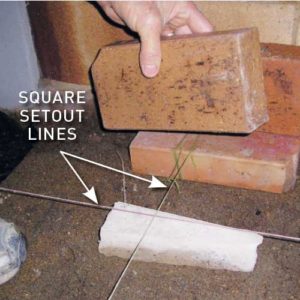How To Lay Pool Pavers

Upgrade the surrounds of a backyard swimming pool with new paving.
There’s nothing better than enjoying a long, hot day by the water, but old and dirty paving can make relaxing by the pool much less appealing.
Surrounded by pavers that had lost colour and showed signs of surface pitting, this backyard pool needed a new-season makeover.
Updating the surrounds of the fibreglass pool involved laying larger 400 x 400 x 40mm pavers, and rounded edging for the coping.
As the property was on the coast and had a saltwater pool, a tough, long-lasting material was essential, as the paving would be subjected to the corrosive effects of salt and chlorine.
TIP When choosing pavers for a project like this, select concrete pavers from an exposure grade category that is in accordance with New Zealand Standards.

Large-format concrete pavers give the pool a brighter look and feel
Make a solid base
For pavers to withstand the test of time and countless litres of splashing and runoff, a solid base is essential.
Use a 100mm thick bed of compacted gravel or a 100mm thick reinforced concrete slab. A slab is the better option around pools and was the substrate here.
Before laying the new pavers, the old coping and pavers were removed.
The coping, usually consisting of bullnose pavers, borders the pool edge. The pavers are glued to the edge beam on fibreglass pools or bedded in mortar around concrete ones.
To get the best bond to fibreglass, remove the gel coat and expose at least 80% of the raw fibre.
New bullnose coping pavers were bedded on a two-part adhesive, as well as a narrow bed of mortar around the fibreglass top edge of the pool.
Paving materials
In addition to the new pavers, you will need to order materials to create a base, lay the paving and grout the finished result.
THE BASE should be 100mm deep and can be a reinforced concrete slab or compacted gravel. Concrete around pools is best for stability. To calculate the quantity, multiply the surface area by the depth, for example, 40m2 x 0.1 = 4m3.
BEDDING SAND covers the base to a depth of about 25mm to provide a level laying surface and stop the pavers from moving. Cemix Joint Sand is suitable for this purpose.
GROUT fills the joints between the pavers, with fine-grained sand being a less expensive alternative. Mixing one part dry cement with six parts sand makes a stable grout, or you can use a commercial grout available at hardware stores. Use a broom to work the grout mixture into the joints, then hose lightly to moisten it. Leave the grout to set, making sure no residue is left on the surface.
One wheelbarrow load of sand is generally enough to grout the paving around a standard-sized pool.
TIP Try Cemix Pavetight Sand.
MORTAR is needed to grout the joints between the bullnose coping pavers. Make a wet mix of three parts sand to one part cement and use
a sponge to work the mortar into the joints, washing it off with clean water. Sponge-finish the mortar edge beneath the front of the bullnose pavers and leave an expansion joint without mortar about every 2m.

Laying basics
Try these simple yet handy techniques to make paving around a pool easier.
OFFSET LARGE PAVERS when stacking them by positioning each paver rotated 45º relative to the previous one. This makes it easier to pick them up by the corners.

Offset large pavers when stacking them by positioning each paver rotated 45º relative to the previous one
CHECK THE HEIGHT of the screeded sand using a paver offcut to ensure the finished paving height will precisely match the top of the coping.

Check the height of the screeded sand using a paver offcut
SCRIBE THE CIRCLE for the pool skimmer box opening by using the ring that the lid sits in as a template to mark the pavers ready for cutting.

Scribe the circle for the pool skimmer box opening by using the ring that the lid sits in as a template
How to lay pool pavers













